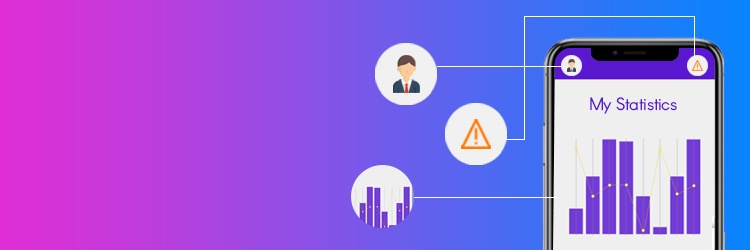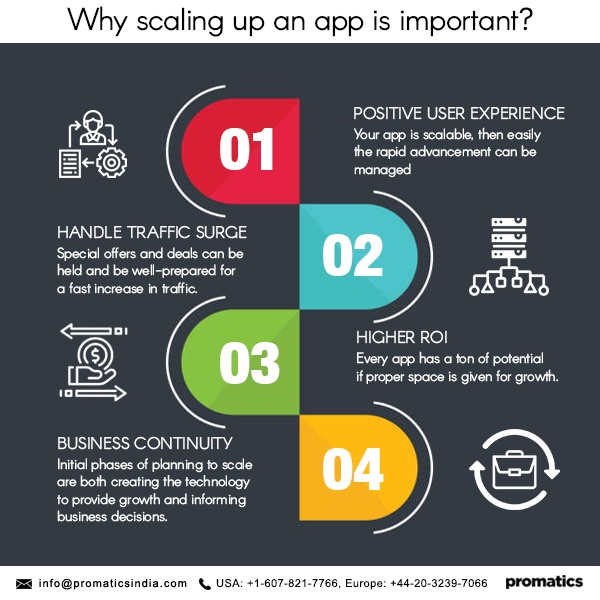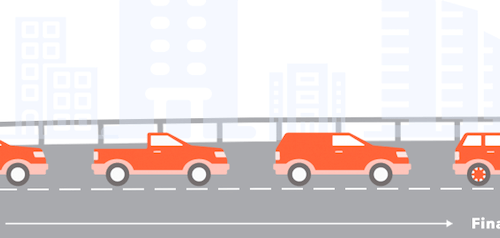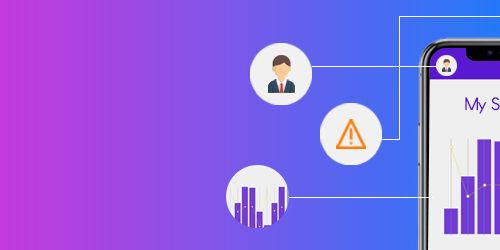Introduction
Minute aspects of detail go in the process of building an app. From an amazing idea to a marketable product is a long and challenging journey. So when you finally decide to build that app, the last thing you want is for it to hit a dead zone.
A recent research report by the Startup Genome suggested that 74% of startups don’t succeed due to premature scaling. It is crucial for a startup to think and plan ahead and this will help to reach their startup to heights of success.
For this it is important to have your base ground strong; to achieve by building a good team, a detailed plan of action, a proper plan for coding and complete tracking of the financial expenses. There is a Gartner report, “The Key Fundamentals Required to Scale Mobile App Development,” warns that “By 2020, market demand for mobile app development services will be three times greater than internal IT organizations’ capacity to deliver them.”
Scaling a spectacular mobile app to support a gamut of users to get access to your mobile app is forever challenging. The best time to manage the scaling of an app is before an issue arises. Let’s have a detailed outlook on some of the major points.
Understanding app scalability
Scalability is the function of your app to manage an increasing number of customers, clients and/or users. It also caters to the ability of your main developer to maintain the app. If there are issues with the application, to add new features will cause a gridlock.
Advantages of a scalable app
If initial consideration from the start is taken to lay a proper base for advancement and to avoid the pitfalls of hitting a dead zone and being left behind in the crunch for demand. Below are some more additional benefits:
Maintain a positive user experience for your app over thousands of users
With the emerging digital world, viral marketing will make your app an overnight success which will generate a huge influx of traffic. Though it is not always predictable. But if your app is scalable, then easily the rapid advancement can be managed with zero downtime and without forgoing user experience. So when the final stage of marketing your app comes in considerations then you can be confident about your app’s reliability.
Take advantage of marketing on your apps on holiday, festive occasions and other special events which will help to increase traffic and usage.
These specific days are times when special offers and deals can be held and be well-prepared for a fast increase in traffic. At the same time, it’s important to carefully plan and execute the launching of your apps on specific days since you don’t want a massive group of users revealing the hidden weakness in your app.
🔍 Master Onboarding with JTBD & MaxDiff
Discover how to optimize your app’s onboarding process using the Jobs-to-be-Done framework and MaxDiff analysis.
Download nowInvolve a flexible and creative developer
It is critical to not hold on to the developer who created the code in the first place. Instead, be flexible to pass on the project to other developers if required.
High growth potential, a higher ROI and more positive user feedback
Every app has a ton of potential if proper space is given for growth. Scaling helps you find the small issues and problems in your app before thousands of users give your negative feedback. The problem can be progressively fixed prior and set the platform for amazing user feedback.
Create an Agile API Layer
Integration is not only important but the most time-consuming and challenging part of building an app. If not managed well, it can lead to delays in app development. Hence, it is highly recommended to build an API layer to make integrations easier and faster. There are various ways: using enterprise mobile back-end service tools, using API management tools for large-scale deployments and even using a rapid mobile app development (RMAD) tool.
Determining if your app is scalable
The best way to know if your app is scalable before it gets thousands of users – is to test it. The main idea of scalability testing is to determine the major workloads and mitigate bottlenecks that can impede your app’s scalability. To definitely make a truly scalable application, it is vital to regularly and rigorously test it for scalability issues.
For example, imagine taking your car to the shopping mall without checking its durability of whether there is enough fuel or the brakes are functional. What if the safety features aren’t good enough to protect individuals from accidents? What if the engine shutdown mid-way? The brand will be tarnished.
Applications function in a similar way. Even if your customers want all the advantages of using your app, they’ll be disappointed by simple scalability and performance issues.
The proper process of load testing is putting a demand on an app and measuring its response. It’s immaterial on how many tests your run, throughput rates and resources utilized and more importantly to determine your app’s breaking point. In load testing, you set criteria to ensure releases of a product to meet certain conditions like a number of users they can support while delivering a specific response time.
The performance testing is undertaken to analyze and improve your app’s performance. This test mainly focuses on optimizing resource consumption by analyzing data composed during testing.
Scalability testing caters to performance testing centered on the detailed understanding of the scalability of an application. The goal is to focus on the breaking point when the application stop scaling and find the issues for it.
Scaling from the initial stage
To plan to scale is an excellent business strategy. Design your app in a way for it to have advancing growth in thousands or millions. These are some important to ponder before you get started:
- On an average how many people will use the app in the coming 6-12 months?
- What kind of data you plan on generating?
- What is the approximate time range to fit all your customers on one server?
- How do manage if you have more customers or data than that?
These initial phases of planning to scale are both creating the technology to provide growth and informing business decisions. To have an account for past growth rate and expected growth rate and decide the potential technologies limits which will be encountered.
Conclusion
Scalability is vital for your app’s success. When your app is scalable, it can enhance growth, offer a good user experience for new users and give you a better return of investment. If your target audience is in thousands or millions then proper planning and execution are required from the beginning. Additionally, ensure you have a suitable process to manage new servers as required. In a time when the demand rises, be ready by having images of the advanced virtual machines which are connected to run each of the servers. This way it will be connected with the latest configuration and be functional will your infrastructure in a fraction of time. In fact any seasoned mobile app development company will always take care of scalability from day one.
Do not wait till the app serves all those current users, but begin the testing from the initial phase itself with the loading tests, performance tests and scalability tests to receive the best results.











